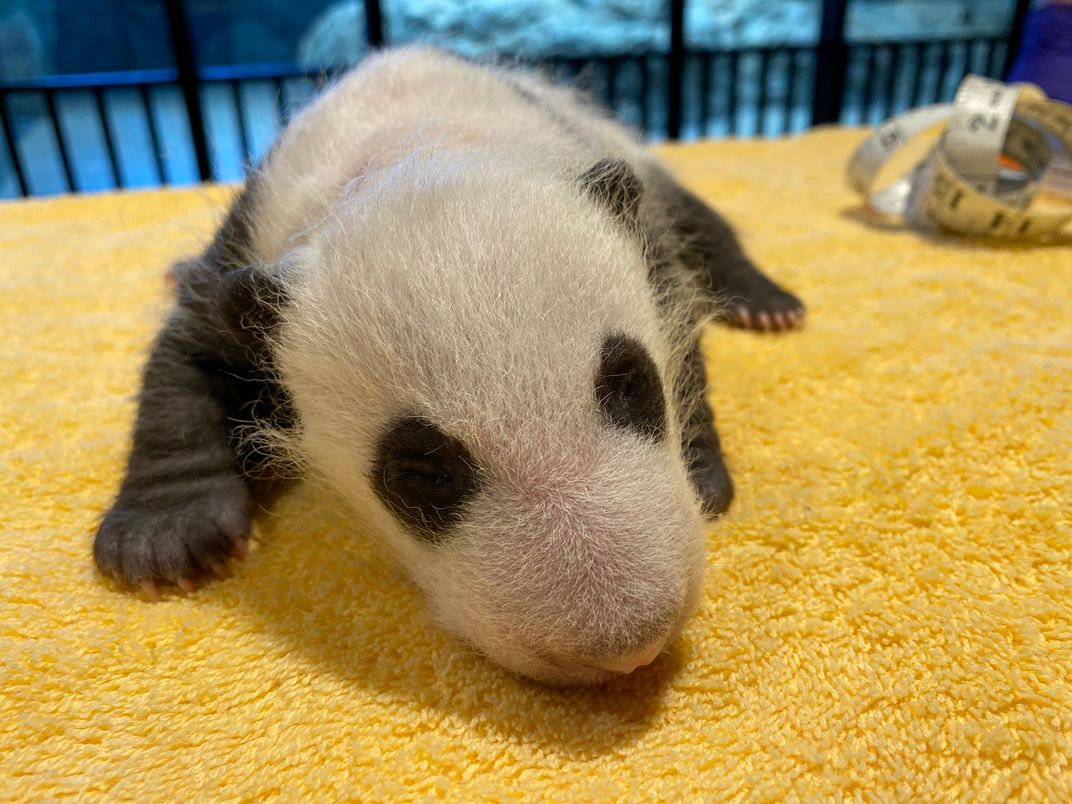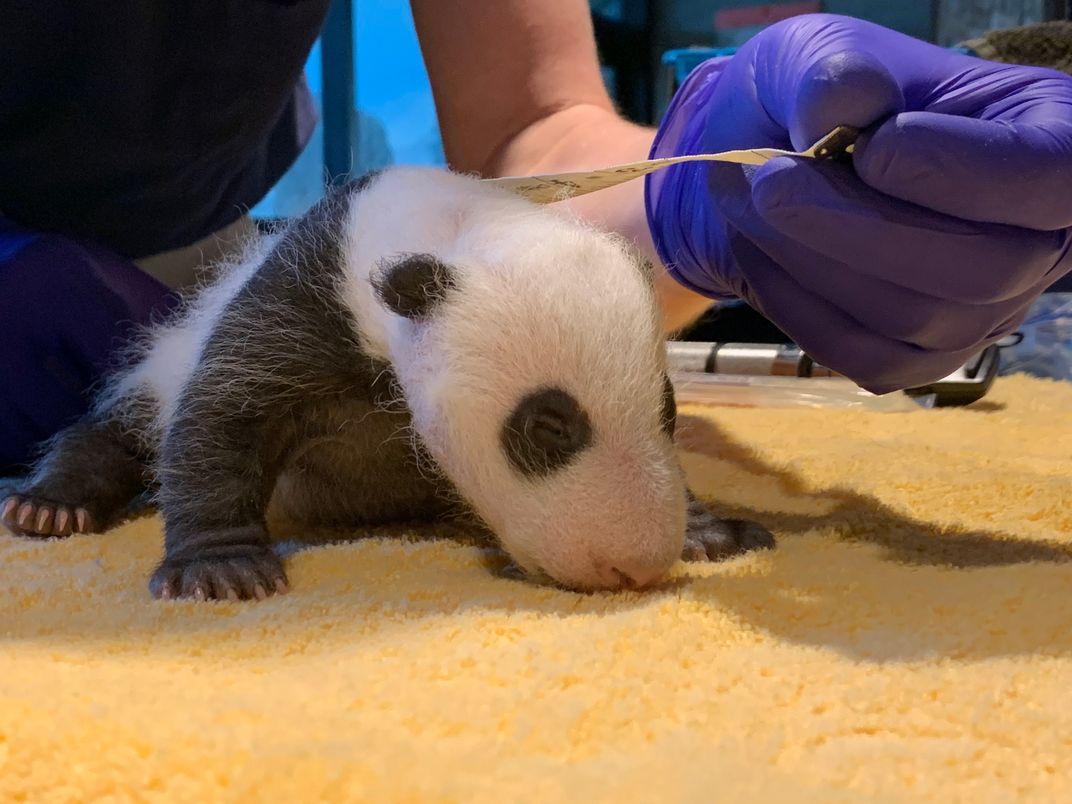NATIONAL ZOO AND CONSERVATION BIOLOGY INSTITUTE
Giant Panda Cub’s First Veterinary Exam
The Smithsonian’s National Zoo’s giant panda cub reached a big milestone over the weekend. The 1-month-old cub had its first veterinary exam, and all signs point to a healthy, strong cub. Get the scoop from Laurie Thompson, assistant curator of giant pandas.

Our giant panda cub has reached a big milestone — Sept. 21 marks one month since its birth Aug. 21! Watching this little one grow under the care of its amazing mother, Mei Xiang, over the past four weeks has been a bright spot in the lives of all who follow their story. We are thrilled to be able to share these joyful moments with fans all over the world.
On Saturday morning, Sept. 19, Mei Xiang placed her cub on the floor of her den and stepped into the adjacent enclosure. This presented the perfect opportunity to conduct another brief exam on the cub. We closed the door to the den, retrieved the cub and placed it on a soft towel. This time, Zoo veterinarians joined the panda team for the exam. The cub weighed 952 grams, or just over 2 pounds. From nose to tail tip, the cub measured 34 centimeters, or 13.4 inches (its tail accounts for 2 of those inches).

Our veterinary team listened to the cub’s heart and lungs, palpated its stomach, tested its suckle reflex and moved all four limbs to assess its musculoskeletal development. They noted that the cub’s eyes are still closed, but the left eye is not closed as tightly and may open soon. Generally, newborn giant pandas open their eyes between 6 and 8 weeks of age. All signs point to a healthy and strong cub!

Veterinarians were also able to take a quick swab of our cub’s cheek for DNA analysis. Outwardly, male and female cubs appear similar at birth, so a genetic test is the most accurate way to determine whether our cub is a male or female. They took the swab to our Center for Conservation Genomics, where Smithsonian Conservation Biology Institute scientists will confirm the cub’s sex. We should have an answer in the next few weeks.

During the exam, the cub let out quite a few grunts and squeals. One particularly loud squeal caught Mei Xiang’s attention. As she made her way toward the door, we ended the exam and placed the cub back in the den. Once Mei Xiang was reunited with her cub, she immediately picked it up and groomed it. Keepers returned a few moments later to offer her diluted juice, which she happily drank.
See Mei Xiang and her cub on the Zoo's live Giant Panda Cam, and check out previous giant panda cub updates.
This story appears in the Sept. 21 issue of the Giant Panda Bulletin. Planning a visit to the Zoo? Please note that Asia Trail, including giant panda viewing, is temporarily closed to visitors for the scheduled repaving of walkways.
